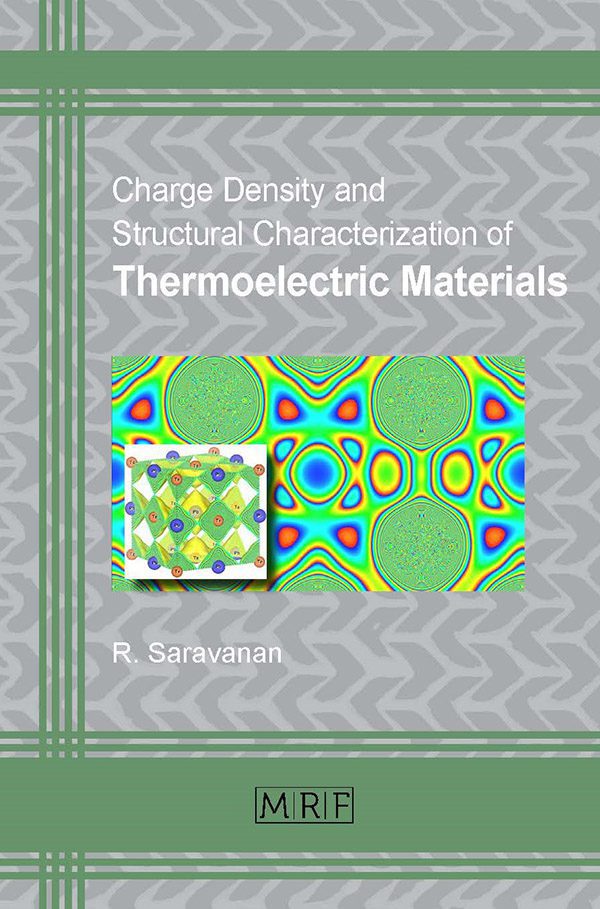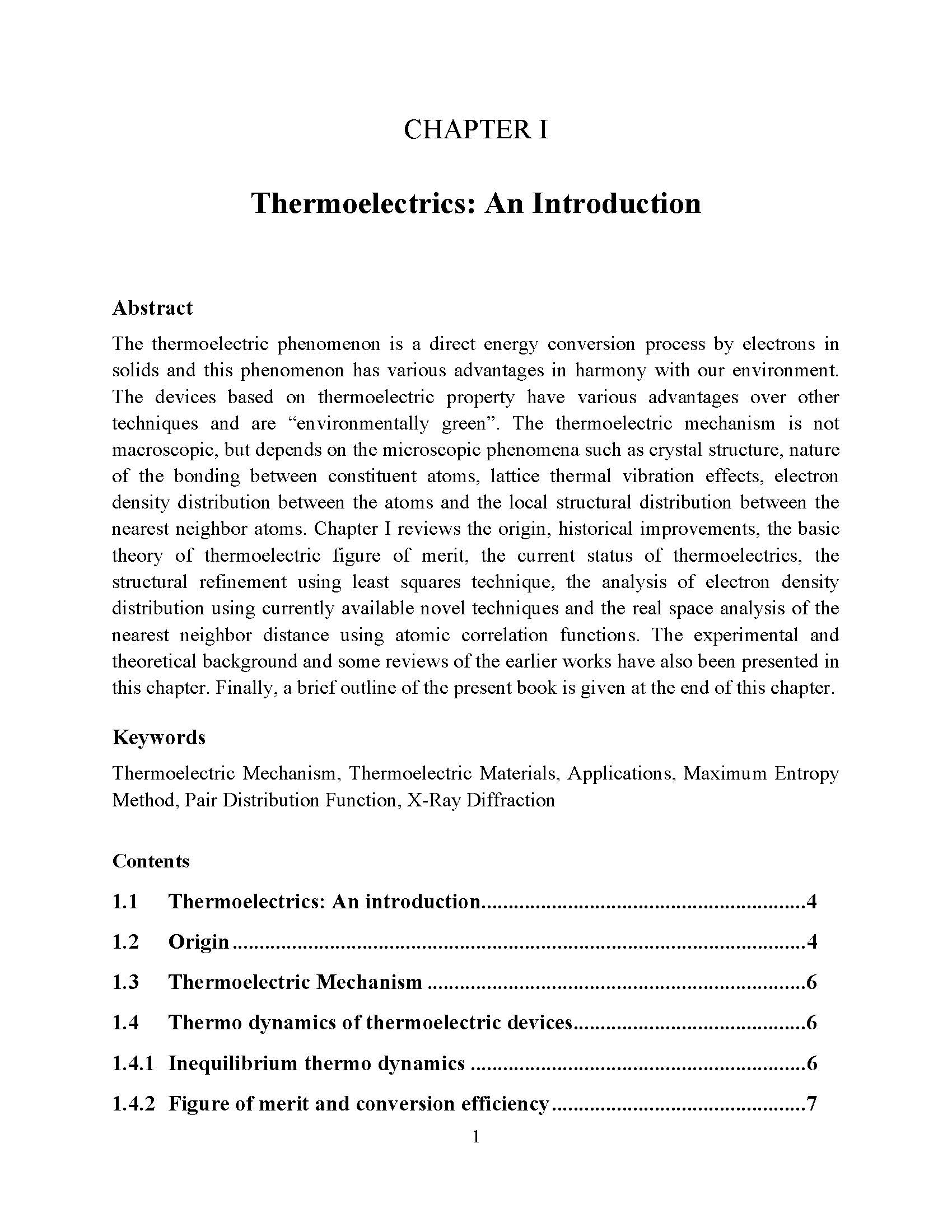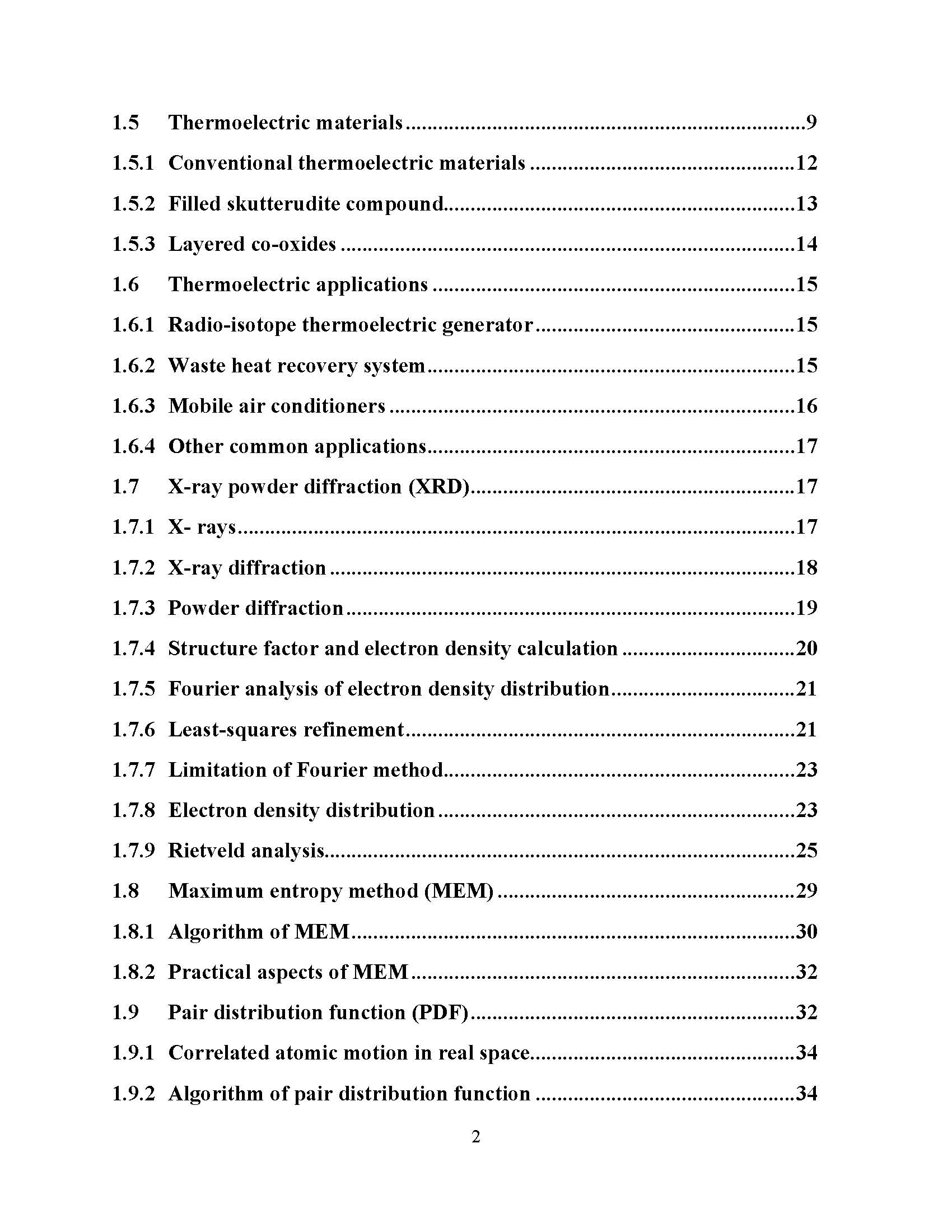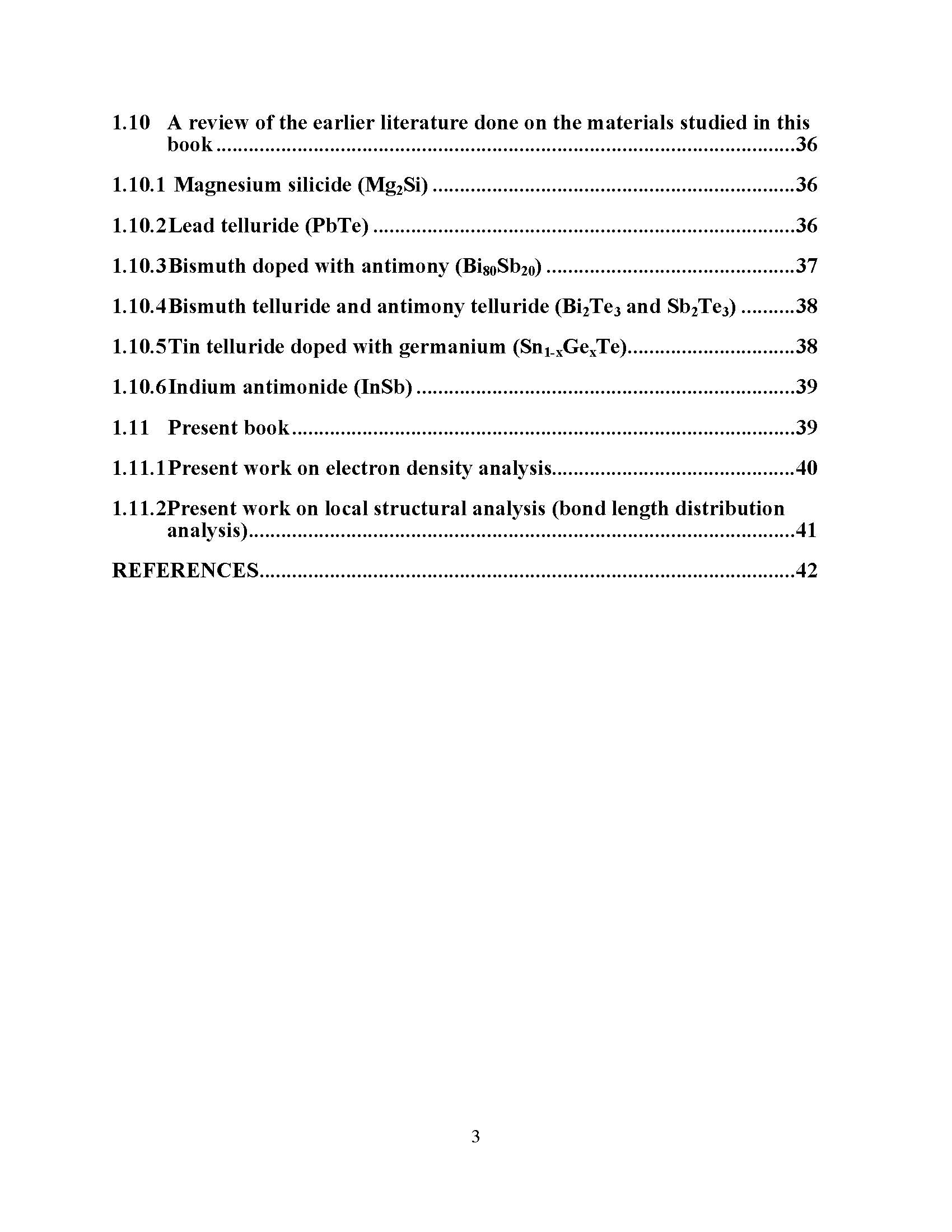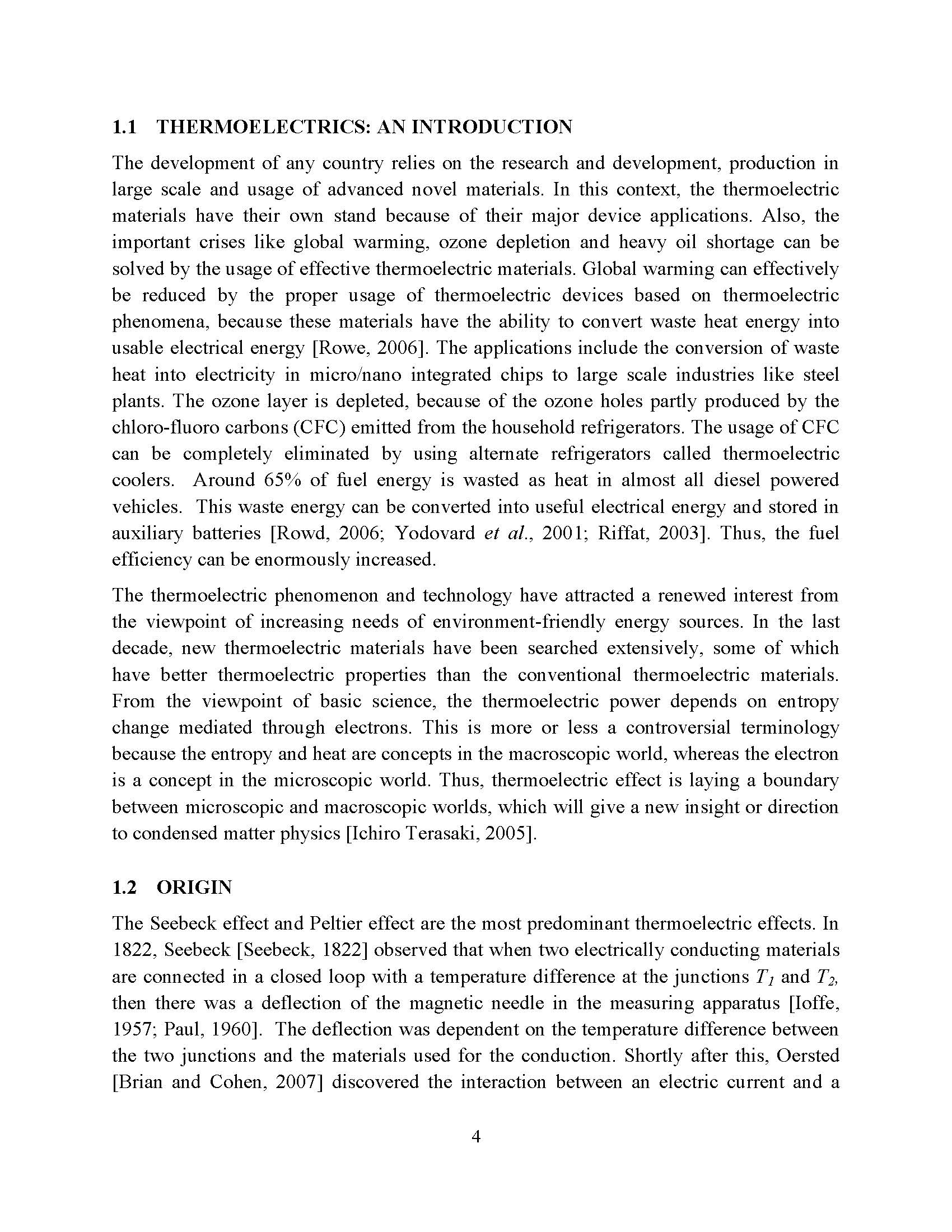Charge Density and Structural Characterization of Thermoelectric Materials
by R. Saravanan
Materials Research Foundations Vol. 1
184 pages, full color print, 2016
Print ISBN 978-1-945291-00-5
eBook ISBN 978-1-945291-01-2
DOI: http://dx.doi.org/10.21741/9781945291012
Thermoelectric materials permit the direct conversion of temperature differences into electric energy, and vice versa. They are therefore of highest technological interest in applications such as solid state coolers, waste heat recovery, sensors and detectors, and power generators including remote power generation.
Thermoelectric materials are often called “environmentally green”, and for good reasons. Not only can they help generate electrical energy from waste gases as they are generated in such processes as home heating, industrial fabrication and automotive motion. In cooling applications they eliminate the use of chemical refrigerant gases. Moreover, as thermoelectric conversion devices have no moving parts, they operate silently and have a very long life expectancy. The only current drawback of these devices is their poor efficiency.
Scientists all over the world are therefore studying the structural, thermoelectric, charge-density and magnetic properties of the most promising types of these materials at the atomic and electronic level. In addition to providing an introduction to the field, the main objective of this book is to present the results of the growth and structural characterization of thermoelectric materials that are of high current interest; including Mg2Si, PbTe, Bi1-xSbx, Bi2Te3, Sb2Te3, Sn1-xGexTe, Te and InSb.
Keywords
Materials Science, Thermoelectric Materials, Thermoelectric Mechanism, Charge Density, Structural Characterization, Magnesium silicide, Lead telluride, Bismuth doped with antimony, Bismuth telluride, Antimony telluride, Tin telluride doped with germanium, Indium Antimonide, Pair Distribution Function, Maximum Entropy Method, Rietveld Method
Table of Contents
Preface v
Chapter I Thermoelectrics: An Introduction 1
Chapter II Results and Discussion Based on Rietveld Refinements 52
Chapter III Results and Discussion on Charge Densities Derived from the Maximum Entropy Method (MEM) 93
Chapter IV Results and Discussion Based on the Pair Distribution Function (PDF) 145
Chapter V Conclusion 162
Keywords 169
About the author 171
paperback flyer
eBook flyer
ProtoView by Ringgold Clean Data
Saravanan presents the results of the growth and structural characterization of a number of thermoelectric materials to determine their suitability for use in thermoelectric devices such as solid state coolers, power generators, sensors, and detectors. The materials are Mg2Si, PbTe, Bi1-xSbx, Bi2Te3, Sb2Te3, Sn1-xGexTe, and InSb. He covers thermoelectric basics, results and discussion based on Rietveld refinements, results and discussion on charge densities derived from the maximum entropy method, and results and discussion based on the pair distribution function. Annotation ©2017 Ringgold Inc. Portland, OR (protoview.com)
Ringgold Keywords
Thermoelectric materials, Charge density, Structural characteristics, Thermoelectric devices, Material science
About the Author
Dr Ramachandran Saravanan, has been associated with the Department of Physics, The Madura College, affiliated with the Madurai Kamaraj University, Madurai, Tamil Nadu, India from the year 2000. He is the head of the Research Centre and PG department of Physics. He worked as a research associate during 1998 at the Institute of Materials Research, Tohoku University, Sendai, Japan and then as a visiting researcher at Centre for Interdisciplinary Research, Tohoku University, Sendai, Japan up to 2000.
Earlier, he was awarded the Senior Research Fellowship by CSIR, New Delhi, India, during Mar. 1991 – Feb.1993; awarded Research Associateship by CSIR, New Delhi, during 1994 – 1997. Then, he was awarded a Research Associateship again by CSIR, New Delhi, during 1997- 1998. Later he was awarded the Matsumae International Foundation Fellowship in1998 (Japan) for doing research at a Japanese Research Institute (not availed by him due to the simultaneous occurrence of other Japanese employment).
He has guided six Ph.D. scholars as of 2016, and about ten researchers are working under his guidance on various research topics in materials science, crystallography and condensed matter physics. He has published around 100 research articles in reputed Journals, mostly International, apart from around 45 presentations in conferences, seminars and symposia. He has also guided around 50 M.Phil. scholars and an equal number of PG students for their projects. He has attracted government funding in India, in the form of Research Projects. He has completed two CSIR (Council of Scientific and Industrial Research, Govt. of India), one UGC (University Grants Commission, India) and one DRDO (Defense Research and Development Organization, India) research projects successfully and is proposing various projects to Government funding agencies like CSIR, UGC and DST.
He has written 3 books in the form of research monographs with details as follows; “Experimental Charge Density – Semiconductors, oxides and fluorides” (ISBN-13: 978-3-8383-8816-8; ISBN-10:3-8383-8816-X), “Experimental Charge Density – Dilute Magnetic Semiconducting (DMS) materials” (ISBN-13: 978-3-8383-9666-8; ISBN-10: 3-8383-9666-9) and “Metal and Alloy Bonding – An Experimental Analysis” (ISBN -13: 978-1-4471-2203-6). He has committed to write several books in the near future.
His expertise includes various experimental activities in crystal growth, materials science, crystallographic, condensed matter physics techniques and tools as in slow evaporation, gel, high temperature melt growth, Bridgman methods, CZ Growth, high vacuum sealing etc. He and his group are familiar with various equipment such as: different types of cameras; Laue, oscillation, powder, precession cameras; Manual 4-circle X-ray diffractometer, Rigaku 4-circle automatic single crystal diffractometer, AFC-5R and AFC-7R automatic single crystal diffractometers, CAD-4 automatic single crystal diffractometer, crystal pulling instruments, and other crystallographic, material science related instruments. He and his group have sound computational capabilities on different types of computers such as: IBM – PC, Cyber180/830A – Mainframe, SX-4 Supercomputing system – Mainframe. He is familiar with various kind of software related to crystallography and materials science. He has written many computer software programs himself as well. Around twenty of his programs (both DOS and GUI versions) have been included in the SINCRIS software database of the International Union of Crystallography.

